Text
Entry #9 - The End
Funny Head premiered in Mayer Theater on December 14th, 2017 alongside 9 other senior thesis films.
Overall, the film’s reception has been extremely positive. Students and professors alike have complimented the film’s tone, narrative structure, and performances - all of which being areas of focus of mine as a director and points of pride for me. Areas of critique have included the editorial pacing of the opening scene and mid-film montage, and the color continues to be a work-in-progress as my colorist and I make the transition from the theater projectors to online/Vimeo.
From initial conception to final assembly, this is the hardest and longest I’ve ever worked on a film project. It has the highest budget and largest crew out of anything I’ve directed. Although the story and production are relatively simple, this is a very personal story for me, and this filmmaking process has been a collaborative and rewarding one. While there will always be nitpicks and issues no matter how many times I re-open the edit, at the heart of this project is something really beautiful and true. I know that I succeeded in making the film I set out to make, and I look forward to the next one.
-Clark, with a C

0 notes
Text
Entry #8 - Sound/Music
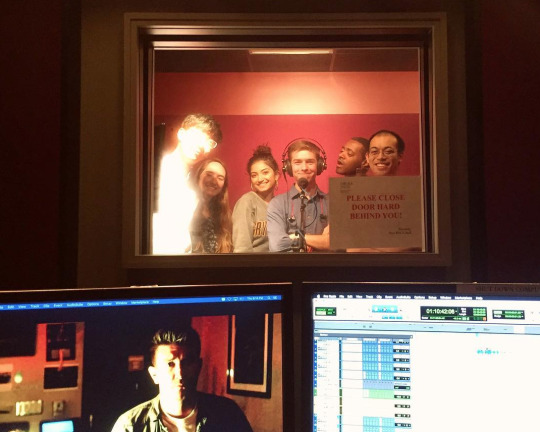
From the first draft of the script, it was clear that the sound design for Funny Head would be a key factor. The biggest challenge to selling the illusion of the film would be creating a realistic audience for Marc’s standup routine, largely through sound design. I was fortunate enough to work with a RECA student for my sound design who, after an initial pass at basic dialog and background editing, sat down with me on several occasions to finesse the finer details of our sound. While the on-set “laugh track” is used for many of Marc’s jokes in the finished film, we brought in several students to record ADR to sweeten these tracks and make them more convincing.
For the music, I returned to collaborate with the German music student who I previously worked with for my Junior documentary thesis in 2016. My editor and I had used a handful of music tracks while arranging the original animatic for the film, but I chose not to share those tracks with the composer in order to avoid emulating these tracks too closely. Instead, I described the length, mood, and instrumentation for each track and provided feedback to my composer as rough versions of each track came in. Overall, I am pleased with the finished product, however since music was the final element to be added before final mix, I still have some nitpicks and will most likely continue to update the score in the future.
0 notes
Text
Entry #7 - Post-Production
Rough cut: https://vimeo.com/241572153 (PW: shrek3)
Because principal photography was conducted every 2 weeks over the course of 6 weeks total, post-production was a rolling process that began immediately after the first three days of filming was completed. This ended up being extremely helpful to me, since I was able to film later scenes knowing which previously-filmed shots they would be cutting against in the edit.
My editor and I met early and often while cutting Funny Head. Much of the feedback that we received had to do with tightening scenes for dead space and including convincing sound design, which was very encouraging. Even in the roughest cuts, my peers responded to the characters, the conflict, and the transitions between scenes. The latter was one of my primary areas of concern since I was worried that audiences would find the cutting from memories to reality confusing, so it was a relief that these scenes work for others.
Picture lock was reached immediately before Thanksgiving break. Although there are shots that I still wish I could improve, I stepped away from picture editing confident that the cut we ended up with is the best we could hope for.

0 notes
Text
Entry #6 - Post-Shoot Analysis
To address the elephant in the room: the largest issue with filming Funny Head was an actor conflict that added an additional weekend of production. Originally, the plan was to film all of the comedy club scenes, the opening green room scene, and the two restaurant scenes in one weekend and the apartment scenes and escalator/elevator sequence in the second weekend. However, the majority of the apartment scenes had to be moved to a third weekend not previously scheduled or budgeted for. Fortunately, the key crew members and cast were able to work with this new date, and all photography was eventually completed as scripted (although marginally over-budget in order to account for an additional weekend of food and transportation).

Despite this setback, principal photography went extremely well! We had a revolving door of crew members in secondary and tertiary positions (our gaffer and sound mixer changed almost daily), but the upper production team kept momentum in the production process and continuity in the style of the film. Working with the actors - especially our lead - was a pleasant experience, and the pre-vis work I did with the storyboards and shot lists were invaluable in shooting the film artistically and efficiently. Ultimately, there are a few shots I wish I had included but didn’t (the first comedy club scene is seriously lacking in shot variety), but my first (official) experience directing was an all-around positive one, and I felt accomplished and confident moving into post-production.

0 notes
Text
Entry #5 - Shoot Logistics

With 12 days until principal photography begins on “Funny Head,” the various aspects of production are still falling into place. Drawing out the storyboards for my animatic was very helpful in making the written word of the script seem more tangible and visual. Both my DP and Editor have seen the storyboards and offered their input, so it’s good to have the three of us on the same page regarding the (rough) vision of what the finished product might look like. My Editor compiled those storyboards, along with temporary dialog tracks, into the animatic this week, offering us a solid “first look” and laying the foundation for when my DP, AD and I will put together the shot list next weekend.
Permit acquisition hit an initial snag last week when it became clear that our first-choice venue for the comedy club, The Living Room, would not be a practical option for production. Although the space is available during the desired weekend, the hours of availability are extremely limited and would make shooting the rest of the film difficult. In contrast, the on-campus bar The Loft, while not equipped to be a performance space in the same way that The Living Room is, can provide us access throughout the weekend pending an additional fee. Using The Loft may put us above our originally proposed budget and will require additional set dressing, but the access is extremely convenient and the space should still work for the film. All other location permits have been acquired without issue.
There are still some minor holes in the production crew (missing a UPM for the 13th, a 1st AC for the 13th - 15th, and Best Boy Electric for the 27th - 28th), however the Producers and I are continuing to reach out to potential leads. The crew that is already on board has proven themselves to be extremely talented, and I look forward to working with all of them.
This Wednesday, I plan to sit down with HoPa in order to officially clear the film for production. There’s no turning back now.
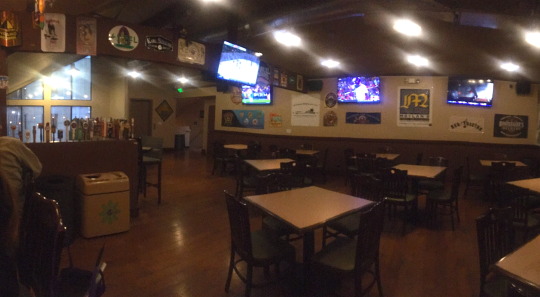
0 notes
Photo

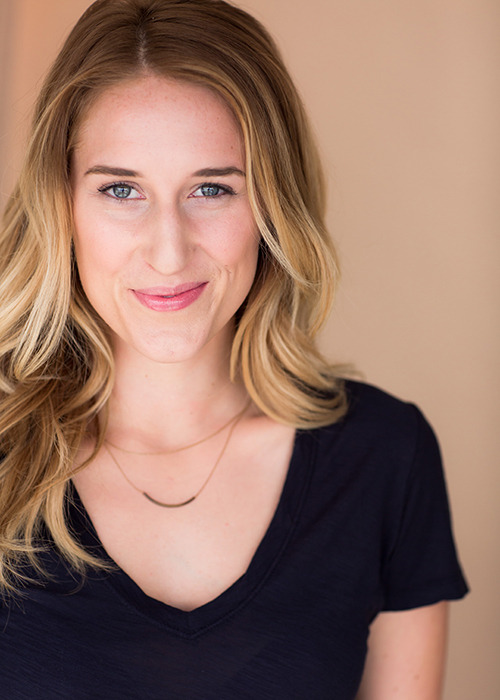
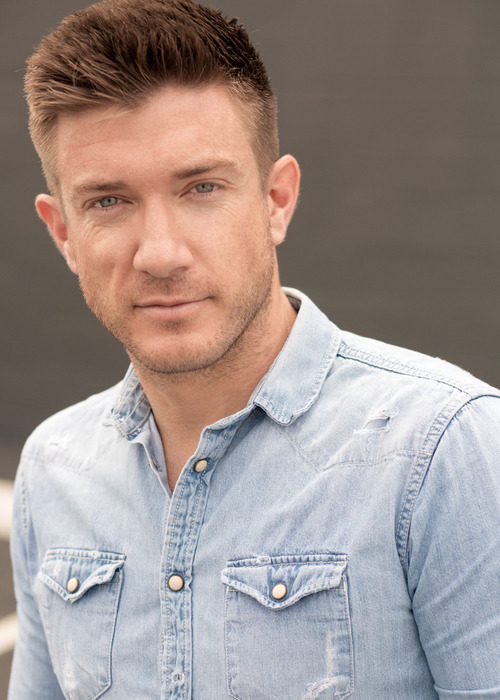
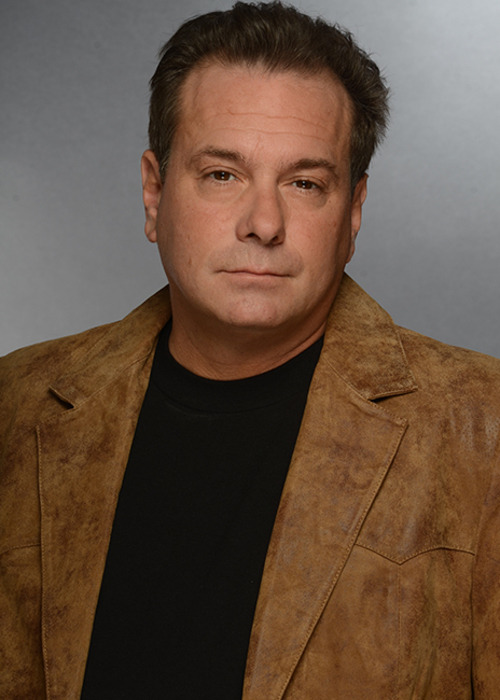
The Cast: Sherome Petty as “Marc” (top), Meagan Nicole Madsen as “Lindsay,” John Mason as “Gordon,” and Joseph Covino as “Joe” (bottom)
0 notes
Text
Entry #4 - Opening Shot/Marc’s Introduction

The narrative of Funny Head is linked entirely to Marc’s journey of inner growth from a performer stuck in a self-destructive habit towards being a healthier, more honest person. As a way to bookend the film and convey this change in a simple, visual way, I plan on including a pair of opening and closing shots that visually represent Marc’s character (similar to the included opening and closing shots of Silver Linings Playbook). Both the first and final image of the film will be closeups of Marc’s face, but with several key differences.
The opening shot - the first time the audience sees Marc - he will be looking down and to the left. He will be placed in the right third of the screen with no negative space in front of him. He’s got nowhere to look forward to. Instead his head is down - it’s difficult to see his face - and as the camera tilts down, the audience sees that he’s still writing away at his notepad. Sonically, the shot is busy. There is the muffled activity of a live audience somewhere past the door to the crowded green room, and inside there is another comic (Joe) pacing back and forth and muttering to himself.
The final shot will invert most of the elements of the opening one. This time, Marc is on the phone with Lindsay, admitting responsibility for his shortcomings for the first time. He is still framed in close-up, but this time his face is clearly visible. Marc is positioned in the left third of the frame looking up and off-screen to the right at the microphone he uses during his stand-up. The audio consists only of Marc and Lindsay’s dialog, with everything else dropping out to a quiet ambience.
Although these shots are simple, they are direct and quickly identify the emotional state of the protagonist from hopeless to optimistic. Paired together, I hope to provide an interesting an meaningful contrast at opposite ends of the film.

0 notes
Text
Entry #3 - Moment of Realization/Decision
In Funny Head, the main character of Marc is introduced in a rut. Incapable of (or unwilling to) opening up to serious emotions with those who should be closest to him, he has lost his relationship with his girlfriend and put a serious strain on another close friendship. However, he does have one endless well of positive reinforcement that he can draw from: a crowd of enthusiastic enablers in the form of his stand-up audience.
Marc’s stand-up persona involves playing up - even grandstanding - the most pathetic and self-deprecating stories about himself that he can think of. The shtick is entertaining and a perennial crowd-pleaser. If Marc chooses to, he can continue performing with this attitude and he’ll be professionally and creatively successful. That said, this behavior has already cost him key relationships in the past and would most likely do so again in the future.
As he begins performing a routine based around his recent breakup, he suddenly re-lives a serious of key moments in his relationship that point out times where others tried to help him and he refused them.

Marc emerges from this series of visions only to realize that he has been standing silently at the mic in front of an expecting audience for an unknown amount of time. This is his moment to make a choice: either he will continue the set as is and continue his own cycle of emotional denial, or he can change.
There is a moment of sonic stillness. Rather than the natural room tone and sound effects from the audience, we hear only the feedback whine from the microphone and a few chords from the score over a dull rumble. Marc looks out through the audience - it’s so dark that he can’t make out faces - and sees Gordon across the room. Although there is physical distance between them, the sequence is shot and cut as if they are standing right in front of one another. At that moment, Marc looks down to see the mic cord wrapped around one of his feet. He steps out of it, places the mic back into its stand, and hastily puts an end to the set. His decision made, Marc’s next move is to make amends with Gordon and Lindsay.
0 notes
Text
Entry #2 - The Look
The main purpose of the visual style of Funny Head will be to establish a clear tonal and narrative distinction between the scenes that take place in the “real world” and those that take place as Marc’s flashbacks and visions.
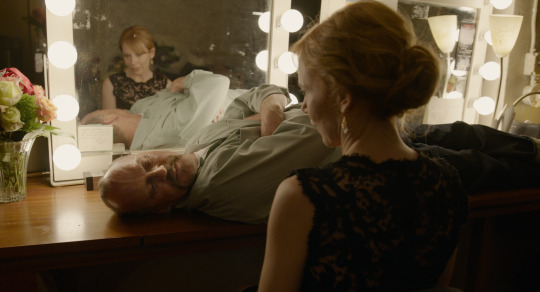
The “real world” sequences all take place in various locations within the comedy club where Marc performs, including the backstage space, and the bar where Gordon and Marc have their final reconciliation. Most of the colors in the club scenes will be based in browns and burnt oranges/yellows. Overall, the feeling should be one of intimate, cozy night life, but bordering on disorienting or claustrophobic as Marc loses his footing during his set. The shadows can become more pronounced, obscuring the anonymous audience in front of him, with the lights becoming more intense and less detail in the backgrounds to focus on. The camera will be handheld during these sequences, bobbing and breathing to mimic the loose, almost improvisational style of live performance and to suggest a documentary or stand-up special during the scenes where Marc is on stage.
youtube
By contrast, while all other locations/scenes are “true” events in the world of the film, they are shown through the lens of a performer reliving a moment. As a result, Marc’s stories and flashbacks are slightly exaggerated in terms of movement, angles, and lighting; drawing more attention to the feeling the audience or Marc is meant to have visiting these moments rather than a more naturalistic approach to how they would realistically play out. The camera is going to alternate between being mounted on a tripod and a Dana Dolly/slider during these scenes, allowing for expressive and even tongue-in-cheek motion.
0 notes
Text
Entry #1 - Director’s Vision
Logline: “When a self-destructive comic debuts a new set about his failed relationship, he is overwhelmed by memories of guilt that expose his toxic habit of pushing away those closest to him, forcing him to confront his own shortcomings in order to preserve his last remaining friendship.”
When I was developing the idea behind Funny Head, I had several goals in mind. I wanted to tell a story that, in a similar way as Groundhog Day, takes a flawed protagonist and makes him come to realize and change something about himself through a hyperreal element. Early themes that I wanted to explore included (1) what happens when someone takes stories from their own life and embellishes or performs them to the point of fiction and (2) making light of something that is personally dark or depressing to the subject. I wanted to somehow incorporate the protagonist interacting with memories from his past, with the experience of seeing those memories again forcing him to make a change later in the film.
I realized that the setting of a stand-up comedy routine is the perfect narrative frame for this story. The structure of a comedy monologue allows for flashbacks and tangents to flow in a stream-of-consciousness style, which I knew I wanted to utilize, and it makes sense for presenting a protagonist who appears outwardly glib and carefree, but is in fact deeply insecure and emotionally guarded. The work of real-life comedian Mike Birbiglia - whose 3 recorded specials and 2 narrative films are available on Netflix - was a significant influence in developing the first draft of the script. His comedy style is similar to the one presented in Funny Head, with lots of pantomime, nonlinear storytelling, and confessions about deeply personal moments.
Now in its second draft, the screenplay for Funny Head presents an inner conflict and journey outwardly when its protagonist, Marc, relives old memories of his relationship, its deterioration, and his breakup while in the middle of a comedy set. He realizes by seeing these visions that he pushes other people away when they try to help him, and his callous attitude and constant joking (in conversation and on-stage) are going to end up isolating him from others forever. Upon coming to this conclusion, he abandons his set and tries to reconcile with his friend and his ex.
Other sources that I have drawn inspiration from in crafting the protagonist, the film’s structure and its themes include Eternal Sunshine of the Spotless Mind (2004), Scott Pilgrim vs. the World (2010), Master of None (2015 - ) and A Christmas Carol (any version, although I’m always partial to the one with the Muppets - 1992).
0 notes
Text
Entry #0 - On “Groundhog Day”

When I was applying for colleges in 2013, a frequently-asked-question on many of the application surveys was “What is your favorite movie?” At the time, it was a question that I wasn’t used to picking one definitive answer for, but I ended up settling on Groundhog Day (1993); a choice that I came to because I wanted to pick (1) a film that I grew up with, (2) a film that I enjoyed repeat viewings of, and (3) a film with critical acclaim already considered one of the Top 100 films ever made on at least a couple of different lists by top critics/organizations. Perhaps this last reason especially was a bit superficial, but I was happy with my decision at the time, and since then my go-to choice of Groundhog Day as my favorite movie has been my consistent, if somewhat tongue-in-cheek, answer.

I still revisit Groundhog Day roughly once a year, and I’ve approached more recent viewings with a critical eye to try to uncover what exactly it is that draws me to it so much. Because it’s true - even though I can point to a handful of other films that I enjoy more on any scale (acting, writing, cinematography, etc), I still hold Groundhog Day in high regard as one of my favorite movies all-around. Here’s what I’ve noticed in the past couple of years:
-Groundhog Day has a simple, fantasy-lite premise. Phil’s time loop is established at the end of the first act, the rules and limitations of the time loop are explored in the second act, but the cause is never explicitly explained. Its logic is entirely built around Phil as a character: he’s callous and insensitive, so he’s punished with the time loop and he breaks out of it when he lets go of trying to control it and instead embraces his fate and tries to help as many people as possible.
-Director Harold Ramis covers a wide variety of emotional tones in the narrative. There’s a dry, often cynical wit in most of the first and second acts that sets the stage nicely, but the film also earns genuine moments of romance, hopelessness, pathos, and sincerity in its second half.
-Finally, Phil Connor’s redemption arc as a character is well-established and (forgive the pun) timeless. Like the premise, it’s extremely simple and doesn’t hold many surprises once it’s established, but that’s also part of the charm. Phil is exclusively the only POV character of the film - everyone else is literally incapable of changing because Phil is the only character living in real-time - and his perspective, actions, and final transformation are extremely clear to track. Of course, the character also hinges on what is a career-defining performance by Bill Murray.

Groundhog Day may not be an extremely complicated film, but in my opinion it is a masterful deep dive into a weird idea and how it affects a protagonist’s development from selfish to selfless. It takes advantage of every scene to riff on that premise and that development to give the audience a range of comic set-pieces and sentimental moments that pay off in a wholly emotional experience and a modern fairy tale.
In my next post, I explain how elements of Groundhog Day’s themes and structure influenced me in developing the story for my film, Funny Head.
0 notes
Photo

“Mike Birbiglia: My Girlfriend’s Boyfriend” (2013)
Part stand-up routine, part one-man-show, this recorded performance by comedian Mike Birbiglia is an exploration of his own experiences with love, relationships, and his disbelief in the concept of marriage. One of the story inspirations for my film.
0 notes